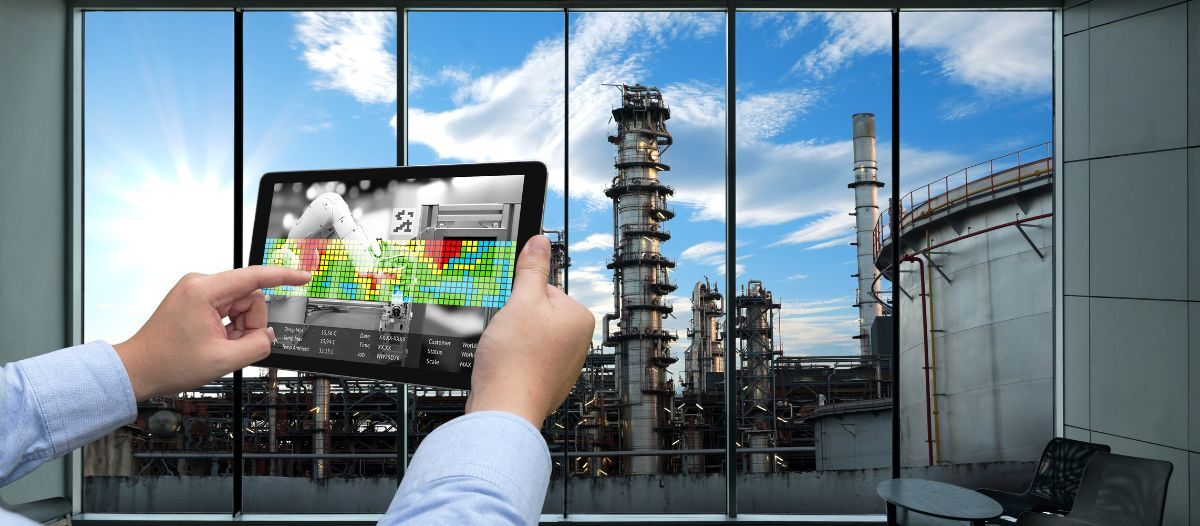AI on the Plant Floor
What FMs need to know

Automation is a dirty word in the lexicon of the American worker that may top all others. Long before the launch of "The Terminator" franchise or Isaac Asimov’s "Bicentennial Man," automation had been a boogeyman for frontline workers across numerous industries – not just a sci-fi plot device, but a real threat to jobs and livelihoods.
Workers are right to be leery of new technologies designed to help businesses increase productivity and reduce overhead. Recent research substantiates concerns that automation can cost jobs and cut worker compensation, particularly within certain sectors. This inherent conflict cannot be brushed aside. After all, any benefits a company gains through the improved efficiency of operations do not trickle down to former employees.
Still, there are advantages to automation even for the frontline worker. On the plant floor, for instance, artificial intelligence (AI) has the sort of computing power that exists far beyond the reach of humans – including access to, and the ability to analyze, terabytes of data and information quickly. When this power is paired with human-specific skills that computers cannot replace – dexterity and creativity – the outcome is powerful.
Take computer vision, for example. It is an exciting field of AI that, when trained properly, can actually interpret the world visually. Imagine that a field technician is able to take a short video or a photo of a factory-floor problem, like a piece of equipment needing repair or a defective device. With an enterprise solution powered by computer vision, the AI can then scan the database for information, replying with feedback of probable causes and possible solutions. This process occurs in an instant, allowing the technician to focus on selecting one or more action steps based on the nuances of the situation (which requires creativity) and executing necessary fixes (which requires dexterity).
That is just one example of AI improving efficiency and worker productivity on the plant floor. However, AI’s biggest asset to frontline and plant floor workers is its ability to remove some of the guesswork out of various processes. For a lot of FM teams , there is a great deal of on-the-job training that often involves time spent transferring tribal knowledge from team member to team member. Additionally, there can be times when the correct process is not clear at the outset or communicated accurately. In those circumstances, it would be helpful for managers and employees to have an advanced system to help guide their workflow processes – perhaps a type of technology to even automate workflow.
Due to advances in AI technology on the plant floor, particularly the use of predictive analytics, both FMs and plant floor employees can have access to centralized data and insights. Not only does AI point to the exact types of information needed to guide decision making, but it can assist in removing the guesswork behind selecting the next steps. Time is one of the most valuable assets on the plant floor for facility managers.
With man and machine working in tandem, companies now have the capabilities to maximize productivity. But one does not truly function without the other. Even given the latest technologies, allowing artificial intelligence to proliferate without appropriate guardrails in manufacturing environments would be unreasonable and dangerous. AI applications will have to be hyperspecific for years to come, and they will require worker oversight, intervention and operation. Man and machine need each other – and manufacturing businesses still need both.
Productivity aside, another major area of advancement in AI on the plant floor is in the area of knowledge transfer. The old methodologies of knowledge management on the plant floors likely will not completely disappear anytime soon – think of whiteboards, team huddles, paper checklists, corporate television screens, emails between managers and coworkers, and handover during shift change. With the help of AI, that entire process can be simplified and streamlined.
Just as there is a type of AI that can be trained to understand the visual world, there is another that can be trained to understand and interpret human language. Natural language processing (NLP) is an AI that helps computers decipher human language as it is either written or spoken. While the technology has been around for decades and has roots in linguistics, the proliferation of true AI has made the use of NLP common practice in knowledge transfer solutions.
One of the most common examples of NLP in action is the chatbot, particularly in customer service. Modern versions expand on those built off of scripts to actually learn from each interaction. Chatbots powered by NLP should closely reflect the experience of talking with an actual human.
On the plant floor, however, AI-powered enterprise solutions can have a similar, chatbot-like approach to simplifying knowledge transfer. One of the biggest issues with the old ways of transferring knowledge from employee to employee is a lack of understanding of tribal or institutional knowledge. Sometimes it can seem like two shifts speak an entirely different language. When a communication solution uses NLP, it can learn from the company’s specific vocabulary and continuously train itself based on its given input. This allows teams to capture more and better information through voice, which is then visible to the FM who can get a full scope of the workflow and what is happening on the plant floor or in the field. Similarly, NLP communication solutions can cut the time needed to communicate effectively and accurately, which saves time between shift change and while completing a task.
FMs are highly experienced in their given fields and are efficient and effective problem solvers. FMs will be faced with a multitude of problems a day, and the buck stops with them. The stakes are usually very high, so thinking decisively and making decisions quickly sets FMs apart from other business leaders.
What if FMs could accurately predict a problem before it happened? What if they could forecast when a piece of machinery would break down? Thanks to advances in enterprise maintenance solutions powered by AI, they can do just that. FMs can use AI software to improve operational decision making by using predictive analytics. Imagine the possibilities of being able to incorporate predictive AI analytics into everyday processes. The FM would be able to schedule downtime to fix problems before they become emergencies. They would be able to forecast their inventory so they never run out of the essential parts.
While there will always be a need for on-the-fly thinking and creative problem solving by FMs, they should also take advantage of the technology available to them to strengthen their operations. Humans are capable of dexterity and creativity in a way that AI will never be able to replicate. Still, the willingness to use all of the tools in their arsenal is what sets a good leader apart from a great one.
Every technological breakthrough may feel like a threat to frontline workers, but new technology tends to take hold in most walks of life. Employees should continue to monitor the effects and implications of AI and other technologies, staying on the leading edge of new developments in order to learn how to make changes work for them. In the end, the companies and workers that embrace AI systematically will hold an enormous advantage over those who do not as the manufacturing industry hurtles into the future.

Mark Lunde is CEO of Genba. For the past 20 years, Lunde has led manufacturing and industrial operating companies. He has focused on the deck plate worker from his earliest days as a submarine officer until today running factories.
References
Read more on Technology and Operations & Maintenance
Explore All FMJ Topics









